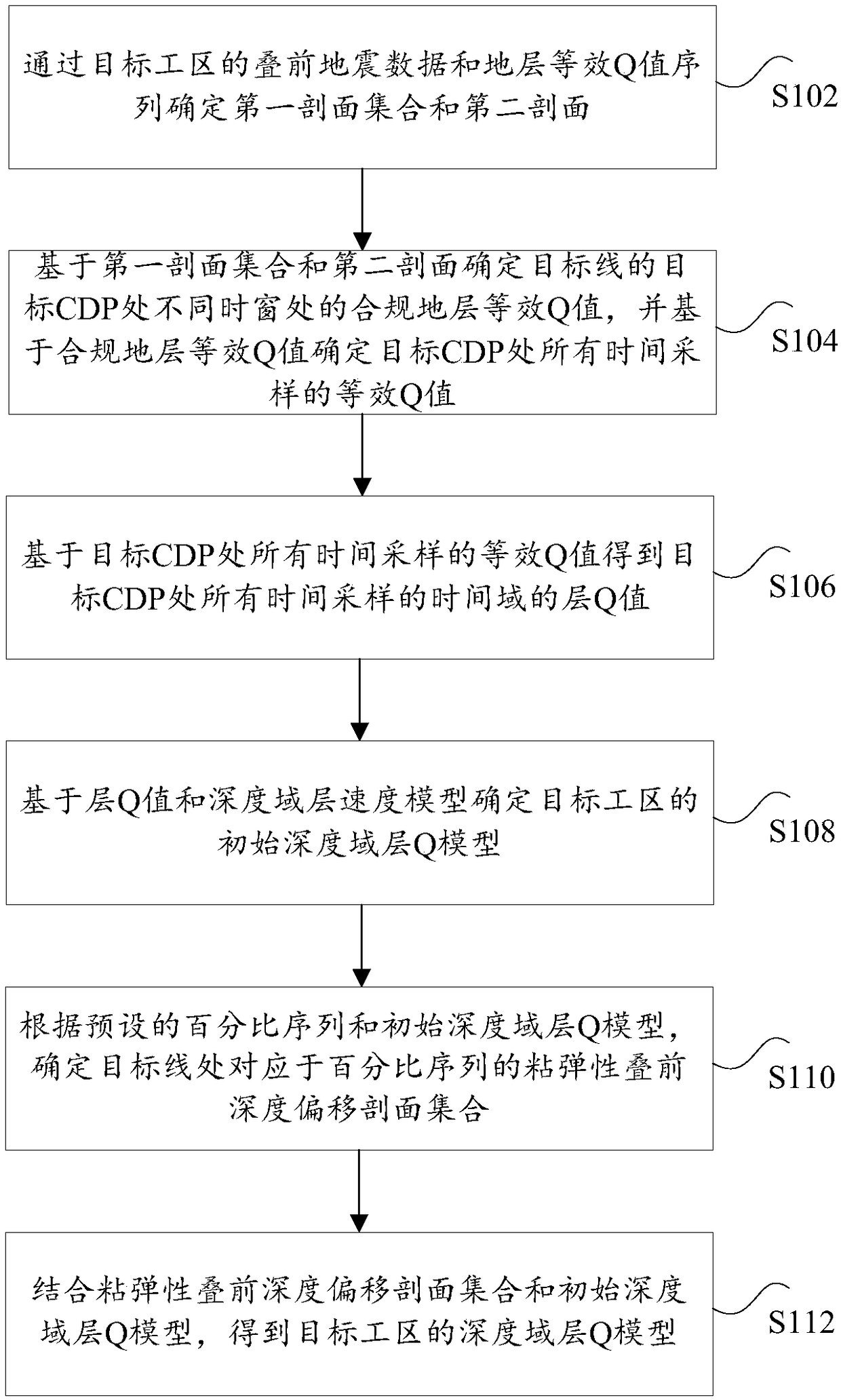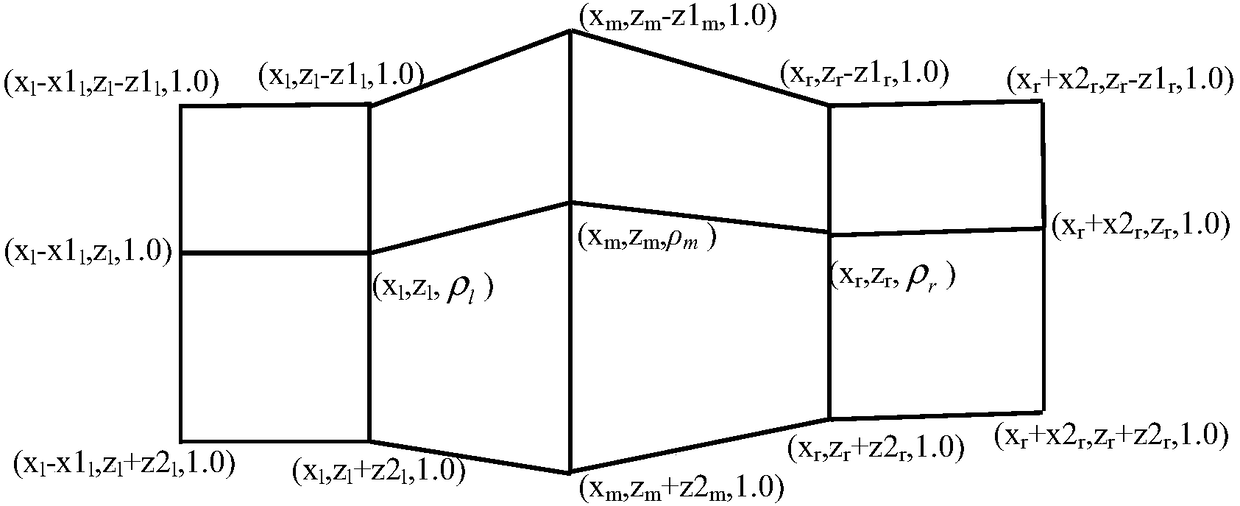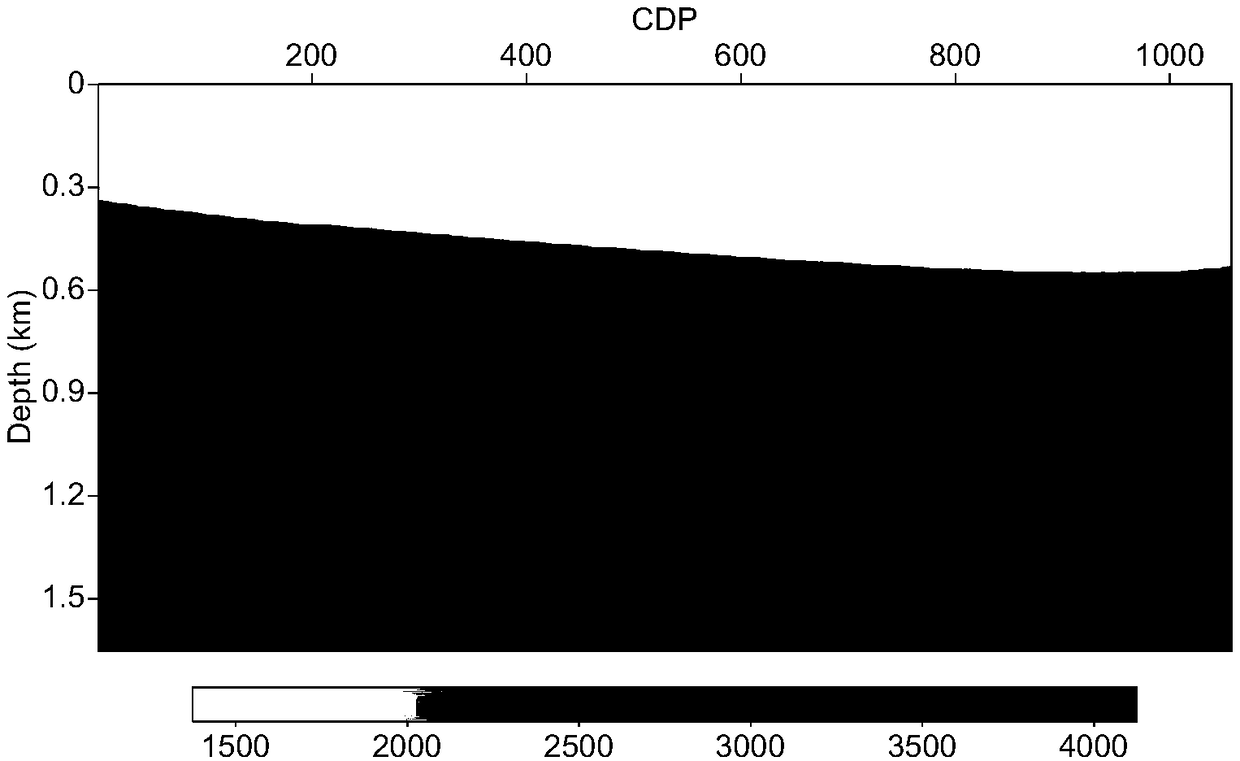Method and system for establishing depth domain layer Q model based on reflection seismic data
A depth domain and stratigraphic technology, which is applied in the field of building a depth domain layer Q model based on reflection seismic data, can solve the problem that the effect of thin layer tuning cannot be eliminated, and achieve the effect of improving the resolution ability.
- Summary
- Abstract
- Description
- Claims
- Application Information
AI Technical Summary
Problems solved by technology
Method used
Image
Examples
Embodiment 1
[0026] According to an embodiment of the present invention, an embodiment of a method for establishing a depth-domain layer Q model based on reflection seismic data is provided. It should be noted that the steps shown in the flow chart of the accompanying drawings can be executed in a set of computer-executable instructions such as and, although a logical order is shown in the flowcharts, in some cases the steps shown or described may be performed in an order different from that shown or described herein.
[0027] figure 1 It is a flowchart of a method for establishing a depth-domain layer Q model based on reflection seismic data according to an embodiment of the present invention, such as figure 1 As shown, the method includes the following steps:
[0028] Step S102, determine the first section set and the second section according to the pre-stack seismic data and the stratigraphic equivalent Q value sequence of the target work area, the first section set and the second sectio...
Embodiment 1
[0139] Through the two-dimensional model data, the application effect of a method for establishing the Q model in the depth domain based on reflection seismic data is illustrated. Total shot point observation, shot point spacing 12.5 meters, track spacing 3.125 meters, 1056 shots per shot, time sampling interval 1 millisecond, 3000 samples, 524 shot data in total, and the main frequency of the Reker wavelet is 30 Hz. Velocity models for forward modeling applications such as image 3 As shown, the stratum layer Q value model is as Figure 4 shown. The conventional pre-stack depth migration imaging profile obtained by using the forward modeling data under the condition of ignoring the stratigraphic Q value model is as follows: Figure 5 As shown in , the resolution in the migration results is significantly lower, especially when the deep strata are mixed together. Utilize the stratum layer Q value model that the present invention elaborates method to set up based on forward m...
Embodiment 2
[0141] Through the 3D reflection seismic industrial data, the application effect of a method for establishing depth-domain layer Q model based on reflection seismic data is illustrated. Total shot point observation, shot point spacing in the inline direction is 250 meters, track spacing is 25 meters, shot point spacing in the crossline direction is 100 meters, track spacing is 200 meters, the number of shots per shot is 1920, the time sampling interval is 4 milliseconds, and the number of samples is 1250. A total of 2160 gun data. Neglecting the stratigraphic Q-value model, the conventional pre-stack depth migration local imaging profile obtained from the 3D reflection seismic industry data is as follows: Figure 8 shown. Figure 9 It is the local contour map of the stratum Q value model established on the 991 imaging line based on the 3D reflection seismic industrial data, and the numbers in the figure are the stratum Q value values. consider Figure 9 For the stratigraphi...
PUM
 Login to View More
Login to View More Abstract
Description
Claims
Application Information
 Login to View More
Login to View More - R&D
- Intellectual Property
- Life Sciences
- Materials
- Tech Scout
- Unparalleled Data Quality
- Higher Quality Content
- 60% Fewer Hallucinations
Browse by: Latest US Patents, China's latest patents, Technical Efficacy Thesaurus, Application Domain, Technology Topic, Popular Technical Reports.
© 2025 PatSnap. All rights reserved.Legal|Privacy policy|Modern Slavery Act Transparency Statement|Sitemap|About US| Contact US: help@patsnap.com



